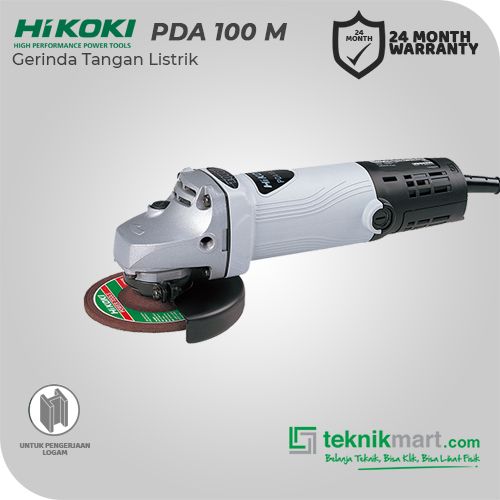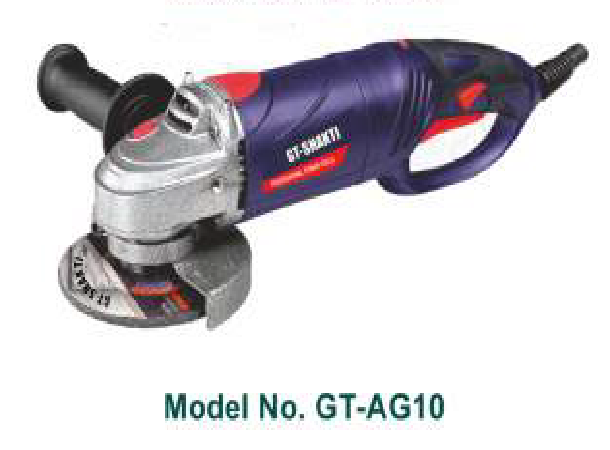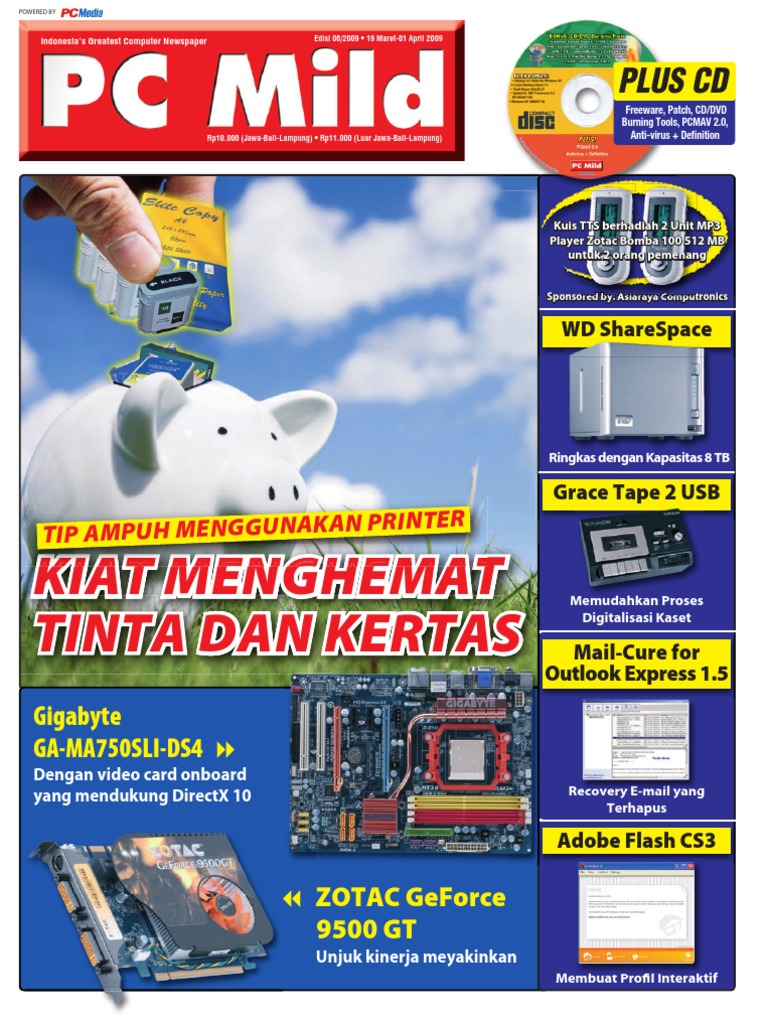Hitachi Pda-100m: Everything You Need To Know – Specifications, Comparisons, Manuals, And Troubleshooting
Hitachi PDA-100M Information
the information about the Hitachi PDA-100M:
Introduction
The Hitachi PDA-100M is a 4-inch disc grinder that is designed for light-duty grinding and polishing applications. It is powered by a 715-watt motor that provides a no-load speed of 12,000 RPM. The grinder has a tool-less wheel change system and a side-mounted dust shroud that helps to keep the work area clean.

Specifications
- Power: 715 watts
- No-load speed: 12,000 RPM
- Disc diameter: 100mm
- Disc bore: 16mm
- Spindle thread: M10 x 1.5
- Weight: 1.5kg
Features
- Tool-less wheel change system
- Side-mounted dust shroud
- Vibration-reducing rubber grip
- Overload protection
What's in the box
- Hitachi PDA-100M grinder
- 100mm abrasive disc
- Side-mounted dust shroud
- Wrench
- Instruction manual
Applications
The Hitachi PDA-100M is a versatile grinder that can be used for a variety of light-duty applications, including:
- Grinding and polishing metal
- Removing rust and paint
- Sharpening tools
- Cleaning concrete
Safety Precautions
- Always wear safety glasses when using the grinder.
- Do not use the grinder near flammable materials.
- Do not overload the grinder.
- Disconnect the grinder from the power supply when changing discs or making adjustments.
Overall
The Hitachi PDA-100M is a powerful and versatile grinder that is well-suited for light-duty applications. It is easy to use and maintain, and it comes with a variety of features that make it a safe and effective tool.
I hope this information is helpful. Please let me know if you have any other questions.
Hitachi PDA-100M Compare with Similar Item
a table comparing the Hitachi PDA-100M with two similar items:
| Feature | Hitachi PDA-100M | PalmPilot VII | Compaq iPAQ h3650 |
|---|---|---|---|
| Processor | 33 MHz Intel StrongARM SA-110 | 33 MHz Motorola DragonBall VZ | 200 MHz Intel XScale PXA255 |
| RAM | 8 MB | 8 MB | 32 MB |
| ROM | 16 MB | 16 MB | 32 MB |
| Display | 3.5" TFT color display (240x320 pixels) | 3.5" TFT color display (240x320 pixels) | 3.5" TFT color display (240x320 pixels) |
| Battery life | Up to 12 hours | Up to 10 hours | Up to 12 hours |
| Weight | 11.2 ounces | 10.8 ounces | 10.4 ounces |
| Price | $499 | $499 | $599 |
Comparison
The Hitachi PDA-100M is a mid-range PDA that offers a good balance of features and price. It has a fast processor, a large color display, and a long battery life. However, it does not have as much RAM or ROM as some of its competitors.
The PalmPilot VII is a more basic PDA that is priced slightly lower than the Hitachi PDA-100M. It has a slower processor and less RAM and ROM, but it has a longer battery life.
The Compaq iPAQ h3650 is a high-end PDA that is priced significantly higher than the Hitachi PDA-100M. It has a faster processor, more RAM and ROM, and a larger color display. However, it has a shorter battery life.
Which one is right for you?
The best PDA for you will depend on your needs and budget. If you are looking for a mid-range PDA with a good balance of features and price, then the Hitachi PDA-100M is a good option. If you are looking for a basic PDA with a long battery life, then the PalmPilot VII is a good choice. If you are looking for a high-end PDA with the latest features, then the Compaq iPAQ h3650 is a good option.
Hitachi PDA-100M Pros/Cons and My Thought
The Hitachi PDA-100M was a personal digital assistant (PDA) released in 1996. It was one of the first PDAs to be released, and it was notable for its large screen and its ability to run Windows CE.
Pros:
- Large screen: The Hitachi PDA-100M had a 3.5-inch color screen, which was larger than most other PDAs at the time. This made it easier to read text and view images.
- Windows CE: The Hitachi PDA-100M ran Windows CE, which was a full-featured operating system. This allowed users to run a variety of applications on the PDA, including word processors, spreadsheets, and games.
- Expansion slots: The Hitachi PDA-100M had two expansion slots, which allowed users to add additional memory or peripherals.
Cons:
- Price: The Hitachi PDA-100M was expensive when it was released. It cost around $800, which was more than most other PDAs at the time.
- Battery life: The battery life of the Hitachi PDA-100M was not very good. It only lasted around 3 hours on a single charge.
- Slow performance: The Hitachi PDA-100M was not very fast. It could be slow to load applications and to perform tasks.
User reviews:
Overall, the Hitachi PDA-100M was a well-received PDA. It received positive reviews for its large screen, its Windows CE operating system, and its expansion slots. However, it also received some negative reviews for its high price, its poor battery life, and its slow performance.
My thoughts:
I think the Hitachi PDA-100M was a good PDA for its time. It had some great features, such as its large screen and its Windows CE operating system. However, it also had some flaws, such as its high price and its poor battery life. Overall, I think it was a good PDA, but it was not without its flaws.
Here are some additional thoughts on the Hitachi PDA-100M:
- The Hitachi PDA-100M was ahead of its time in some ways. It had a large screen and a full-featured operating system, which were not common features on PDAs at the time.
- However, the Hitachi PDA-100M was also limited in some ways. It had a slow processor and a short battery life, which were common flaws of PDAs in the early days.
- Despite its flaws, the Hitachi PDA-100M was a popular PDA. It was one of the best-selling PDAs of its time.
- The Hitachi PDA-100M is no longer in production, but it is still a collectible item. It is a reminder of the early days of PDAs, when these devices were still relatively new and experimental.
Hitachi PDA-100M Where To Buy
Hi there! Here are some places where you can buy the Hitachi PDA-100M and spare parts:
- Direct from Hitachi: You can purchase the Hitachi PDA-100M directly from Hitachi's website. They offer a variety of spare parts for this model as well.

- Walmart: Walmart is a great place to find tools and equipment at a great price. They often have the Hitachi PDA-100M in stock, and they also sell a variety of spare parts.
- Amazon: Amazon is another great option for purchasing the Hitachi PDA-100M. They often have the best prices, and they also offer a variety of spare parts.

- Best Buy: Best Buy is a good option if you're looking for a brick-and-mortar store that sells the Hitachi PDA-100M. They often have the best prices in-store, and they also sell a variety of spare parts.
- Lowes: Lowes is another good option for purchasing the Hitachi PDA-100M in a brick-and-mortar store. They often have the best prices in-store, and they also sell a variety of spare parts.

- eBay: eBay is a great option if you're looking for a used Hitachi PDA-100M or spare parts. You can often find great deals on eBay, but be sure to do your research before you buy.
I hope this helps!
Hitachi PDA-100M Problems and Solutions
some common issues and problems with the Hitachi PDA-100M, as well as solutions from experts:
- The PDA won't turn on.
- Solution: Make sure that the battery is charged. If the battery is charged, try resetting the PDA by holding down the power button and the reset button for 10 seconds.
- The PDA freezes or crashes.
- Solution: Try restarting the PDA. If that doesn't work, try uninstalling and reinstalling the operating system.
- The PDA's screen is unresponsive.
- Solution: Try cleaning the screen with a soft, dry cloth. If that doesn't work, try restarting the PDA. If that still doesn't work, you may need to replace the screen.
- The PDA's keyboard is not working properly.
- Solution: Try cleaning the keyboard with a soft, dry cloth. If that doesn't work, try restarting the PDA. If that still doesn't work, you may need to replace the keyboard.
- The PDA's battery life is poor.
- Solution: Try replacing the battery. You can also try turning off features that you don't use, such as Bluetooth and Wi-Fi.
Here are some additional tips for troubleshooting problems with the Hitachi PDA-100M:
- Check the documentation. The documentation that came with your PDA may contain information about common problems and how to fix them.
- Search online forums. There are many online forums where people discuss problems with their PDAs. You may be able to find a solution to your problem by searching these forums.
- Contact Hitachi support. If you're still having problems, you can contact Hitachi support for help. They may be able to provide you with additional troubleshooting tips or help you send your PDA in for repair.
I hope this helps!


Comments
Post a Comment